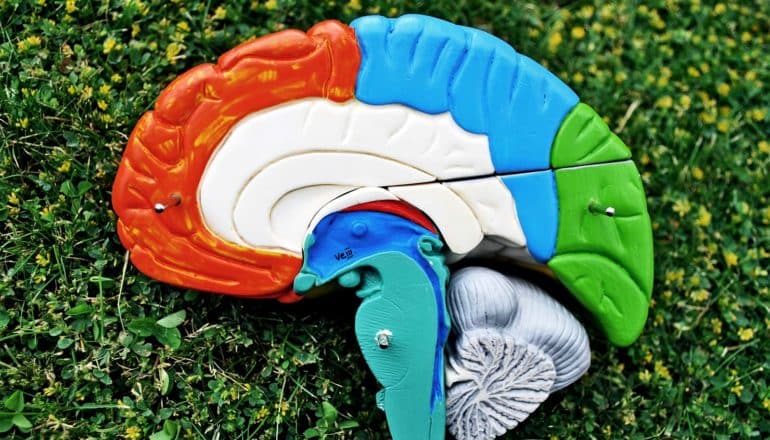
A protein called haptoglobin prevents delayed severe brain damage after a cerebral hemorrhage, researchers report.
After a hemorrhage, free hemoglobin, which comes from red blood cells and damages neurons, causes the brain damage.
Bleeding in the narrow space between the inner and middle meninges is life threatening. Small protrusions in the major arteries at the base of the brain (aneurysms) that can burst without warning usually cause this type of cerebral hemorrhage. A third of patients who have this kind of hemorrhage, who are often still young, die as a result of the massive increase of pressure inside the skull.

“Even if we manage to stop the bleeding and to stabilize the patients, in the first two weeks after bleeding there can be delayed brain damage. This often leads to severe impairments or can even be fatal,” explains Luca Regli, director of the neurosurgery department of Neurosurgery at the University Hospital Zürich (USZ).
It hasn’t been possible to prevent these serious consequences of bleeding in the subarachnoid space, but the researchers have discovered a promising strategy: Haptoglobin, a protective protein found in the blood, binds the hemoglobin in the cerebrospinal fluid before it can cause damage.
“We observed that in the days after the bleeding, the accumulated blood slowly resolves and the hemoglobin from the degraded red blood cells gets into the cerebrospinal fluid,” says Emanuela Keller, head of the neurosurgery intensive care unit. This protein, which is normally responsible for transporting oxygen, plays an important role in the occurrence of delayed neurological damage.
“Using patient samples and tests on sheep, we have now been able to show that the hemoglobin leads to vasospasms and penetrates deep into the brain tissue, where it can directly damage neurons,” says study lead Dominik Schaer, a professor at the University of Zürich and chief of service in the internal medicine department at USZ.
The substance that makes hemoglobin so dangerous is iron, which is found in the center of the protein and has a high propensity to undergo chemical reactions. Diseases such as malaria, which also cause the release of hemoglobin, have led to the human body, in the course of evolution, forming its own protective protein called haptoglobin. In the blood, haptoglobin binds free hemoglobin, thus preventing its toxic effects in blood vessels and kidneys. However, the concentration of haptoglobin in the brain is very low and does not offer enough protection against a cerebral hemorrhage.
By administering purified haptoglobin directly into the cerebrospinal fluid of sheep via a catheter, the researchers could make use of this natural protective mechanism.
“We could show that purified haptoglobin prevents vasospasms and blocks free hemoglobin from penetrating the brain tissue,” explains Schaer.
For patients who suffer bleeding in the subarachnoid space, these results have great medical potential. “We have found a possibility to potentially prevent the toxicity of free hemoglobin after intracranial hemorrhage. This could significantly improve the neurological prognosis and the long-term quality of life for those affected,” says first author and neurosurgeon Michael Hugelshofer.
The research appears in the Journal of Clinical Investigation. Additional researchers from the University of Zürich, University Hospital Zürich, and the Veterinary Teaching Hospital Zürich contributed to the work.
Source: University of Zürich
The post 1 protein blocks brain damage after hemorrhage appeared first on Futurity.
from Futurity https://ift.tt/2WfjSSE
No comments:
Post a Comment